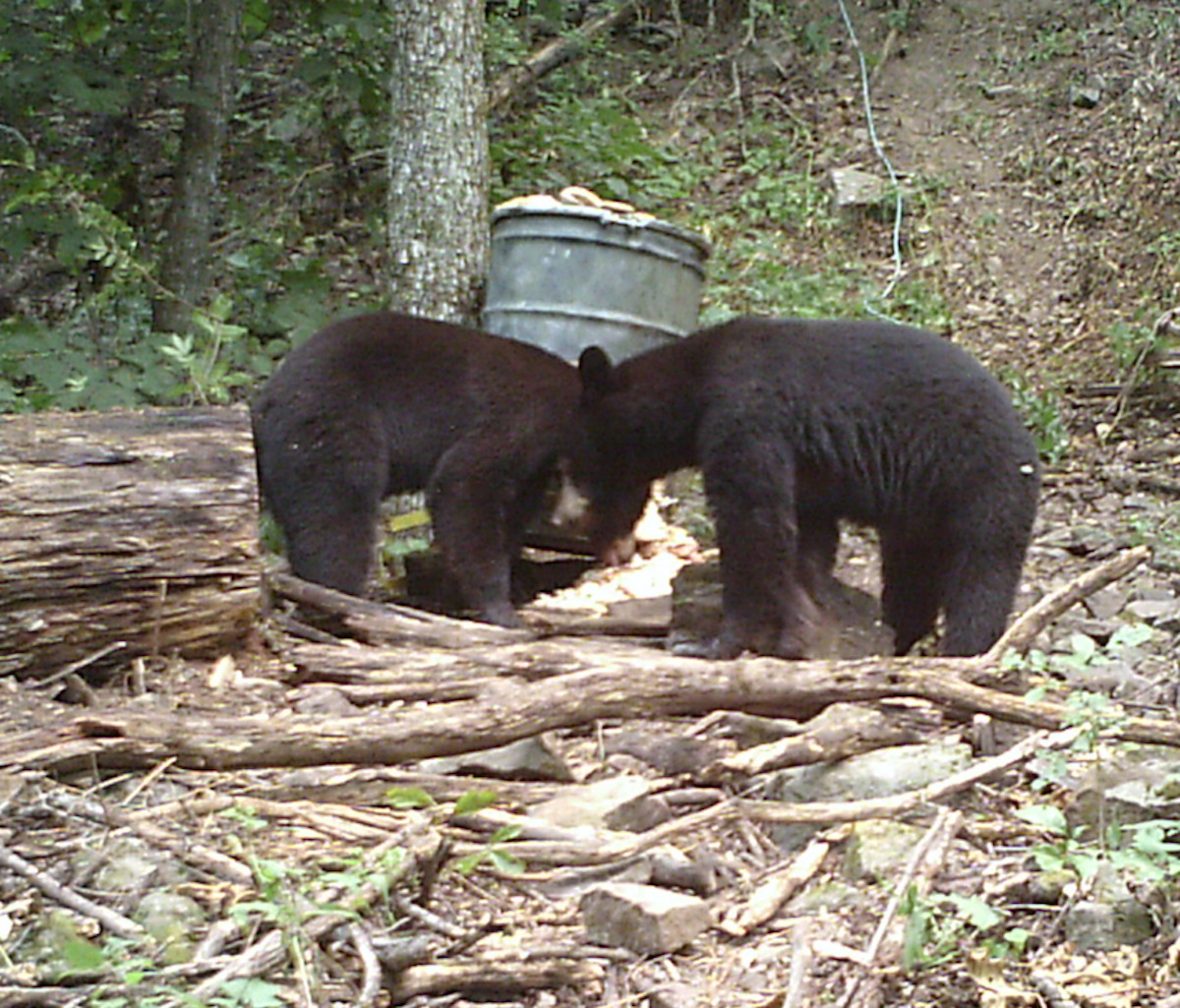 |
| Fred Dablemont with the giant beavers ( 96 and 92 pounds) from the Big Piney River in the winter of 1952 Likely both are state records. |
At the University of Missouri, the science classes had the best of instructors. My college advisor was a mammology instructor by the name of Dr Campbell. The man came to despise me because of several things. Mostly it is because at the age of 18 I was too obnoxious. Instead of keeping my mouth shut, I corrected him on something in class, and talked too much about my experiences back home on the Big Piney River.
He resented the fact that for my mammology project I trapped small mammals along the Big Piney and came up with two mice, male and female, that had never been seen in the state. They were known as brush deer mice, (Perimiscus Boyli) which had never been found in Missouri before. I spent the whole two week Christmas break in 68 camped out in an old shack on the Piney and caught 13 species of ground mammals.
Dr. Campbell gave me a C on the project! A lot of that low grade was due to the fact that I had made another 100 dollars trapping some fur along the river with my grandfather out of an old wooden johnboat and he found out about it. When I sold the two live mice for 50 dollars more to the St. Louis Zoo, the man who took them was Marlin Perkins. In 1969 he wasn’t that famous. I didn’t know him from Adam Cartwright. Mr. Perkins was tickled with the two rare mice… he said the zoo was constructing a small mammal section where they would go. Until that time the brush mouse species had been found no closer to the Big Piney than Oklahoma.
I never did win over Dr. Campbell even after I promised him a free float-trip on the Piney. I was writing a weekly column on nature and the outdoors for the Columbia Missourian newspaper, and he didn’t like that. I bragged a little too much about it, I reckon. And I should have kept my mouth closed about what all I knew from my 18 years on the Big Piney listening and learning from the old rivermen there and my grandfather.
The straw that was piled on Dr. Campbell's back, (get it, ‘straw that broke the camels back’) was when he was talking about river furbearers once and he said that beavers only grew to 60 or 70 pounds, and didn’t live much past 10 years.
Of course I couldn’t let that pass because my grandfather and his trapping partner, Bill Stalder, had caught two that were 96 and 92 pounds, weighed on feed store scales in Houston, Missouri, which came from the lower Big Piney River just past the mouth of Arthur’s Creek, along a long bottomland field on the southwestern side of the river. In that long, flat field there had been acres of corn planted by a farmer for years. He was losing so much corn to beavers and other varmints, he came to my grandfather and offered to pay him well to thin out the corn stalk stealers. I was told years later that the two big ones were a male and female, stocked in the river about eight or nine years before by the Missouri Conservation Commission, (a different agency than today’s imitation, the Missouri Department of Conservation). And the two beavers had delighted in growing old and fat on the abundance of corn, likely raising enough young’ins to populate a good section of the Missouri river itself.
Grandpa Fred and Bill Stalder set drown-set steel traps, which did not hold an animal alive for hours along the river, it drowned them quickly. It is complicated to explain that, but it amounted to a weighted wire going out into the water, which the trap could slide down, but not back up. Beaver traps had to be strong, because beavers have a tapered foot and if they are big and strong, more than 40 or 50 pounds, they can pull their foot right out of a trap. Those two trappers back in 1952 found those two giant beavers all right but they couldn’t hold them. Old Bill Stalder had the answer… some bear traps! He found four and about three weeks and a half dozen smaller beavers later, they caught the two big ones. My grandfather told me years later they could hardly lift them into the boat they were so big. Anyways, they were not world records. The world record beaver weighed 110 pounds: caught from the Iron River in Wisconsin in 1921 and thought to be 20 years old. Many captive beavers have reached that age. I am sure they were among the top ten, and surely the biggest ever caught in the lower Midwest. But who knows?
Dr. Campbell gave me a C in mammology, and I knew why. In my obnoxiousnous, I brought that 1952 photo of Bill and Grandpa with those two giant beavers to class for all to see and sort of stuck out my chest and said I told you so. And this is hard to believe, but Dr. Campbell told the whole class that those photos were phony, and had been re-touched up somehow. He said no beaver had ever reached 75 pounds. Let alone 96! Photos from 52… touched up and phony? You can see those pictures on my website, www.larrydablemontoutdoors.blogspot.com
More about beaver in next week’s column. My email is lightninridge47@gmail.com. Write to…PO Box 22, Bolivar, Mo.65613










